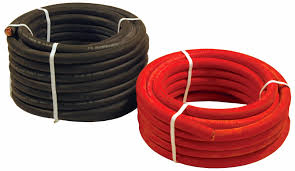When working on a boat, by far the most common question people have is “what size wire or cable do I need for…?” While professional electricians can always help to determine the proper size you need, before you talk to a professional, it is best to figure out a few things on your own. To help get you started, here are a few answers to some common questions many people have when choosing a marine cable or Battery Cable Wire.
What Is A Marine Cable Wire?
Marine cable wire is a general term for describing any type of electrical wire or cable that is suitable for marine conditions. However, whether it is a battery cable wire or wiring for other specific purposes, marine cables have to be designed with careful consideration of the immediate environment around their installation. For instance, the wiring has to be water-resistant to be safe, but it also has to be able to withstand the vibrations from when the boat is moving.
What Do I Need to Consider When Determining the Correct Marine Wire Size?
When determining the correct marine cable size, there are a few variables you need to consider. The first factor you need to contemplate is the direct current, or the amount of current going from your battery to the equipment for which you are trying to determine the proper size wire. In most situations, you will be dealing with a low voltage of 12 Volt circuits. Therefore, the next big issue you need to keep in mind is voltage drops (when the voltage reaches its destination with less energy than what it started with). Voltage drops occur as electricity travels. The further the voltage travels, the more energy you will lose. In the marine industry, there are two acceptable voltage drop limits from the American Boat and Yacht Council (ABYC) – 3% voltage drops and 10% voltage drops.
The other half of the equation you need to consider is the number of amps the battery cable wire or other marine wires are rated to carry. You can determine the exact current the cable can transfer by looking at the ambient temperature, gauge conductor size, and the jacket temperature rating. The larger the conductor and higher the jacket temperature rating, the more current it can carry.
How Do I Determine the Cable Size Required?
Once you have taken notes on the above properties, you need to figure out the distance the wire will cover from the power source to the device and back again (or the round trip distance the direct current will make). Next, you will need to know the circuit amps (or current draw). Using the information you obtain, you can use a Voltage Drop Calculator. By plugging in your data (amps, voltage, and distance information) and choosing what you think is the proper wire size, you can calculate if the wire will meet the required limits set by the ABYC. If you have too high of a voltage drop, then you will need to go back in and select a different wire size until you find the correct marine wire or battery cable wire for the voltage drop.
If you have any other questions or require additional help to figure out the proper marine wire, contact the wiring specialists at EWCSWire. Their skilled associates can answer any and all wiring questions for your marine projects, so call 1-800-262-1598 today and let them point you in the right direction for all your required supplies.
For more information about Electrical Wire and Welding Cable Please visit : Electric Wire & Cable Specialists (EWCS).


